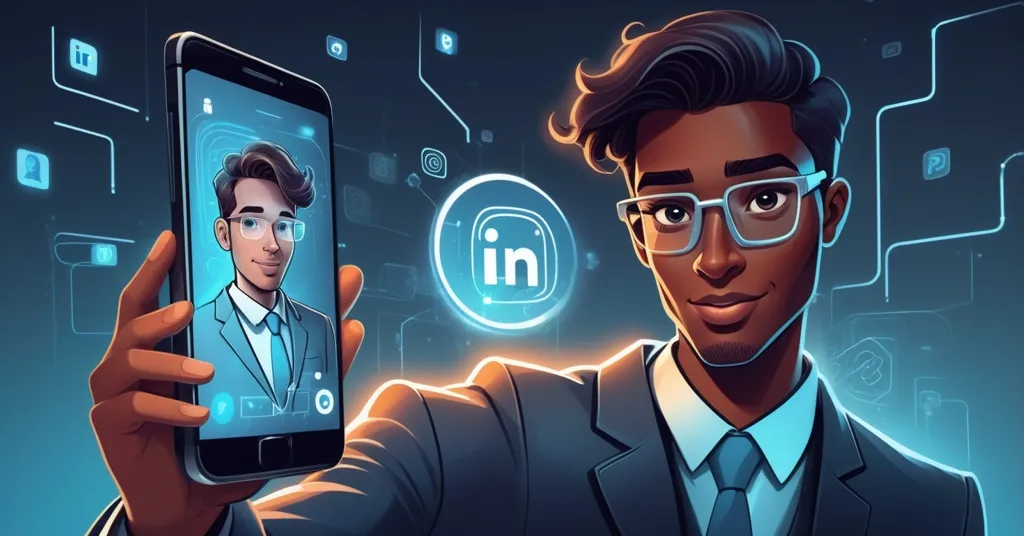AI Headshots: Job Market Game-Changer or Trust-Killing Deception?

AI Headshots Revolutionize Job Hunting: Affordable Disruption or Digital Deception?
Job seekers are flocking to AI-generated headshots, ditching exorbitant professional photographers for quick, cheap alternatives that promise a LinkedIn glow-up in minutes. But as this tech reshapes first impressions in the job market, it’s sparking debates about authenticity and trust—much like the disruptive waves we see in blockchain and crypto.
- Cost and Speed: AI headshots cost under $50 and deliver instantly, while traditional shoots in the US can run hundreds of dollars with days of waiting.
- Impact: Users report massive spikes in employer outreach, yet recruiters flag risks of fake or over-polished images.
- Broader Trend: From Gen Z to HR pros, AI is infiltrating every corner of recruitment, mirroring tech disruption in other fields.
The AI Headshot Boom: Cheap, Fast, and Accessible
In a world where your LinkedIn profile is often your first handshake with a potential employer, a polished headshot can make or break that critical impression. Traditional professional photography, especially in the US, comes with a brutal price tag—often several hundred dollars for a single session, not to mention the time spent scheduling, posing, and waiting for edits. For many job seekers, especially those early in their careers or between gigs, that’s a non-starter. Enter AI-driven solutions like InstaHeadshots, PhotoPacksAI, HeadshotPro, Aragon AI, and even Canva, which are turning the game on its head. For less than $50, these tools transform a basic selfie into a studio-quality profile picture in mere minutes. No awkward small talk with a photographer, no waiting around—just upload a snap, let the algorithm work its magic, and download a headshot that screams “hire me.”
How do these tools even pull this off? At their core, they rely on machine learning models trained on thousands of professional photos. The AI analyzes your selfie, tweaks lighting, smooths out imperfections, and sometimes even crafts a virtual studio background, mimicking the polish of a high-end shoot. It’s tech wizardry that’s democratizing access to professional imagery, especially for younger generations like Gen Z and millennials who are all over these cost-effective hacks. Take Melanie Fan, who works in growth at online shopping platform Plush. She was done with the old-school photography grind, sharing her frustration:
“It was really expensive. The process of getting the pictures back, rendering them, looking at which ones I looked the best in, and then sending it back to the photographer for edit.”
After switching to an AI tool, the results floored her.
“After I changed my LinkedIn photo, the amount of inbound I’ve been getting from companies has skyrocketed,”
she said, noting a 3-4x spike in recruiter outreach. That’s not just a win; it’s a career catapult. For more on this growing trend, check out this detailed report on AI-generated headshots gaining traction among job hunters.
The demand for a strong online presence isn’t just anecdotal. Research from Canva reveals that 88% of job applicants believe a good profile photo sways hiring decisions—a 45% jump from the previous year. In a digital-first job market, a grainy selfie or a poorly cropped group pic can tank your chances before you even get a foot in the door. Danny Wu, head of AI development at Canva, summed it up neatly:
“This is just a more accessible way to get professional and unique headshots.”
Accessibility is the kicker here—AI is tearing down financial and logistical barriers, much like Bitcoin stripped away banking middlemen for the financially excluded.
The Dark Side: Trust and Authenticity on the Line
Before we crown AI headshots the ultimate job market hack, let’s slam the brakes and get real. There’s a glaring downside to this tech, and it’s got recruiters twitching. When an image is overly polished—or worse, borderline fabricated—it can mislead employers about who you really are. Imagine showing up to an interview looking nothing like your digital doppelgänger; that’s not a first impression, it’s a first disaster. Sam DeMase, a job hunting advisor at ZipRecruiter, hit the nail on the head:
“It’s becoming more and more difficult to tell whether a headshot has been enhanced or generated by AI.”
The tech is getting so slick that distinguishing real from artificial is turning into a guessing game, and that’s a problem for a process built on trust.
Platforms like LinkedIn are trying to keep things in check. They allow AI-generated photos but draw a hard line on authenticity, warning that images must represent the real you. A spokesperson made it clear:
“Profile photos that don’t comply with our user agreement or professional community policies may be removed.”
Sounds fair, but it’s a Band-Aid on a deeper wound. What happens when AI headshots become the norm? Will recruiters start demanding video intros or in-person meetups just to verify you’re not a walking catfish? And let’s not ignore the shady side of this space—some AI tools are little more than digital snake oil, cash grabs preying on desperate job seekers with promises of career miracles. We’ve seen this playbook before in crypto with scam tokens and rug pulls; the job market isn’t immune to predatory hype either.
There’s also a flip side to the cost-saving narrative. Sure, AI is dirt cheap compared to a pro shoot, but traditional photographers bring something algorithms can’t: human touch. They offer personalized advice, adjust on the fly to capture your best angles, and build a rapport that can ease nerves. An AI won’t tell you to tilt your chin or crack a joke to loosen you up. For some, that human element might still be worth the premium, even if it stings the wallet. It’s a reminder that tech disruption doesn’t always mean a full replacement—sometimes it’s just a new option, not the only one.
Beyond Headshots: AI’s Grip on Recruitment
AI’s role in the job market doesn’t stop at pretty pictures—it’s infiltrating every stage of the hiring pipeline. A staggering 90% of hiring managers have dabbled with AI tools for recruitment, while data from the Society for Human Resource Management (SHRM) shows 66% of HR professionals use AI to craft job descriptions and 44% to screen resumes. Job seekers are catching on too; 96% of those using AI tools report snagging callbacks. Picture this: a recruiter sifts through hundreds of LinkedIn profiles daily. An AI-enhanced headshot might make them pause, but it’s often AI on their end deciding if your resume even gets a human glance. We’re witnessing a full-on automation arms race in hiring, and it’s not hard to see why. Efficiency is king in a world of tight budgets and tighter deadlines.
Gen Z and millennials are driving this trend, not just because they’re broke or tech-savvy, but because they’ve grown up in a gig economy where standing out is survival. They’re used to curating online personas—Instagram filters today, AI headshots tomorrow. But what’s the societal ripple here? If AI keeps embedding itself in recruitment, we might see a future where human judgment takes a backseat to algorithmic first cuts. That’s a double-edged sword: faster processes for companies, but potentially colder, less nuanced evaluations for candidates. Could this tech, meant to empower, end up dehumanizing the job hunt? It’s a question worth chewing on.
Parallels to Crypto: Disruption with a Catch
What does AI in the job market have in common with Bitcoin’s crusade against financial gatekeepers? At their heart, both are about empowerment through cutting out costly middlemen. Just as Bitcoin lets you bypass banks to control your own money, AI headshots let you skip overpriced photographers to control your professional image. It’s effective accelerationism in action—pushing tech adoption to dismantle outdated, elitist systems at breakneck speed. We’re all for that at Let’s Talk, Bitcoin. Disruption is the name of the game, whether it’s decentralizing finance or democratizing imagery.
But here’s the rub: both spaces are rife with pitfalls if you charge ahead blind. In crypto, scams and shady projects lurk behind every shiny promise; in the job market, AI tools can burn you if they prioritize flash over substance. Catfishing your future boss with a fake headshot is no different from falling for a rug pull in DeFi—both erode trust, and trust is the bedrock of any system, decentralized or not. There’s also a fascinating crossover potential here. Could blockchain tech solve AI’s authenticity crisis? Imagine a future where headshots are tied to NFTs or verifiable digital signatures, proving they’re real or at least transparently altered. Much like Ethereum’s smart contracts cut through bureaucratic distrust, blockchain could anchor trust in a world of pixel-perfect illusions. It’s a pipe dream for now, but one worth exploring if we’re serious about accelerating tech responsibly.
Key Takeaways and Questions to Ponder
- How are AI-generated headshots changing the job hunt?
They’re making professional imagery affordable and instant, with users like Melanie Fan seeing a huge boost in recruiter interest after updating their profiles with AI-enhanced photos. - What are the risks of using AI photos for professional branding?
Misrepresentation is the big red flag—overly edited or fake images can shatter trust with recruiters if the real you doesn’t match the digital version, risking credibility right out of the gate. - Why are younger generations leading the charge on AI headshots?
Gen Z and millennials, as digital natives on tight budgets, gravitate toward these tools to stand out in a ruthless job market without shelling out for traditional photography. - How is AI reshaping recruitment beyond just headshots?
It’s everywhere—90% of hiring managers use AI, while HR leans on it for job descriptions and resume screening, pointing to a broader automation shift that could redefine hiring. - What’s LinkedIn’s stance on AI-generated images?
They’re fine with AI photos as long as they accurately depict you; violate that, and your image could be pulled to uphold platform integrity.
AI headshots are a brilliant hack for job seekers looking to make a splash without draining their savings, but they’re also a tightrope walk between innovation and deception. Much like Bitcoin’s mission to upend traditional finance, this tech is shaking up professional norms with a promise of empowerment. Yet, the lesson from both worlds is clear: wield these tools with honesty, not hype. So, as you eye that AI-powered LinkedIn pic that slays the algorithm, ask yourself—are you showcasing your skills, or just selling a pretty picture? In a space where first impressions are everything, authenticity might still be the ultimate currency.



